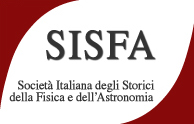Speaker
Description
The evolution of the astrophysical dimension of cosmic-ray studies as a bridge between high-energy particle physics and experimental astrophysics has not been explored as it deserves, considering its explosive developments during the 1970s/1980s also contributing to the emergence of astro-particle physics, a field whose identity was shaped by the growing symbiotic relationship between elementary-particle physics, high-energy astrophysics and cosmology.
Since the advent of the modern era of cosmic ray studies at the end of the 1920s, detectors have ranged from small Geiger-Müller counters up to giant arrays distributed over areas measured in square kilometers, in order to understand which are the sources and mechanisms of acceleration of the most energetic particles in the Universe. At ultra-high-energy regimes of incoming particles, the low probability of such events is compensated by the huge exposure on the ground. Different techniques have been developed to observe the Extensive Air Showers, initiated both by charged particles or gamma-ray photons, all having in common the same well established practice for studying rare events: large-scale detectors.
The same concept has been transferred to the search for solar neutrinos, to last generation arrays for gamma-ray astronomy and to huge detectors hunting high-energy cosmic neutrinos, dark matter candidates and other relics of the early Universe, or searching for proton decay.
Also the long baseline kilometer-scale interferometers catching gravitational waves originated from cosmic catastrophes are part of this network of detectors addressing fundamental physical and astrophysical questions.
At the intersection of different research areas, detection approaches and communities of practitioners, astro-particle physics provided an umbrella merging different observational, theoretical and material cultures, creating a new unconventional breed of “astronomers”, more and more combining forces in the new field of multimessenger astrophysics.

